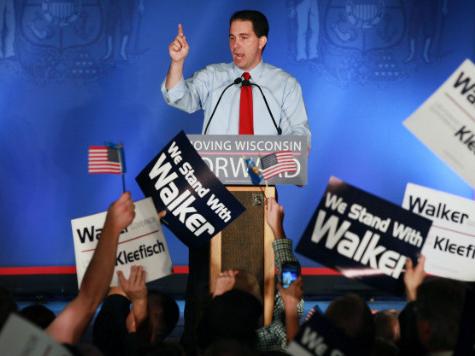
In 2011, Wisconsin Governor Scott Walker signed a law that allowed state and local public employees to opt out of paying dues into public unions, required higher payments into health care and retirement pensions, and also stipulated that public unions had to hold annual recertification votes.
The law prompted dramatic protests around the state from public employee unions, as well as legal challenges that ended in June 2011 when the Wisconsin State Supreme Court upheld the law. Political challenges continued, however, and were not turned back until a year later, when Governor Walker won a strong victory in a June 2012 recall election forced by opponents of his union reforms.
Walker’s legal and political victories have lead to a dramatic decline in Wisconsion public union membership, as the Washington Examiner reported on Friday. Citing recent Labor Department filings, the Examiner noted that “membership at Wisconsin’s American Federation of State, County and Municipal Employees Council 40 — one of AFSCME’s four branches in the state — has gone from the 31,730 it reported in 2011, to 29,777 in 2012, to just 20,488 now.” This decline of 11,242 members in two years represents a 35% membership drop since Walker’s law passed.
In addition membership in “Wisconsin’s AFSCME Council 48, which represents city and county workers in Milwaukee County, went from 9,043 members in 2011, to 6,046 in 2012, to just 3,498 now.” The loss here has been even more steep, a decline of 5,545 members in two years, or more than 60%.
Data on the two other Wisconsin AFSCME councils are not reported to the Department of Labor, since they do not represent any private sector unions.
Union membership has been on the decline for decades. In 1983, according to the Bureau of Labor Statistics, 20% of American workers belonged to a union, but by 2012 that number had declined to 11%. That drop has been greatest in the private sector. In 2012 the Bureau of Labor Statistics reported that “union membership in the private sector was much lower, 6.6% of total workers versus the 35.9% of total workers in the public sector.”
When public employees are given the freedom to choose, the Wisconsin experience indicates that the private sector trend of diminished union membership will also extend into the public sector.

COMMENTS
Please let us know if you're having issues with commenting.